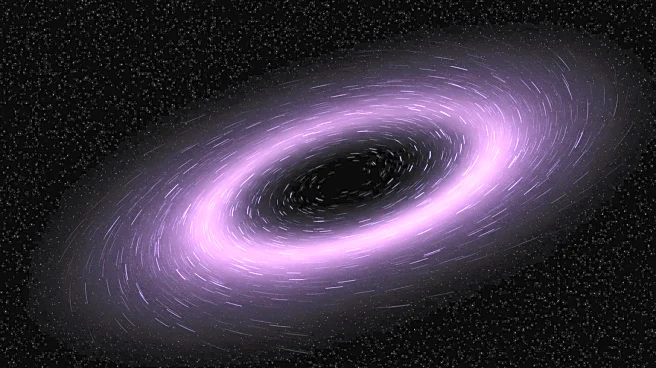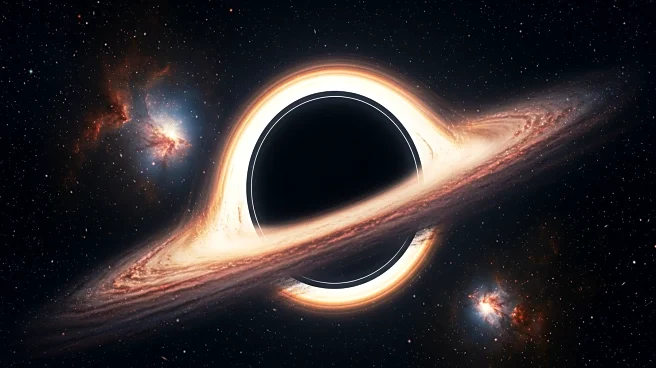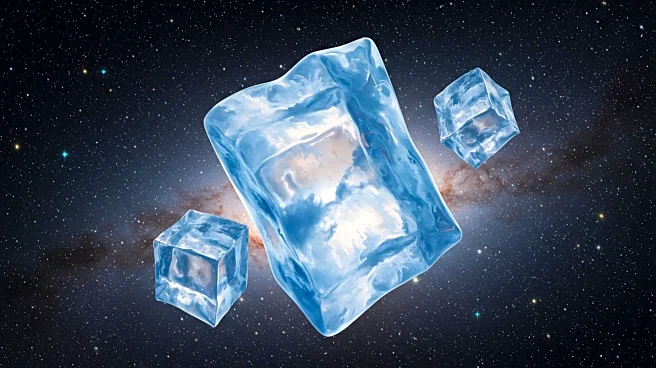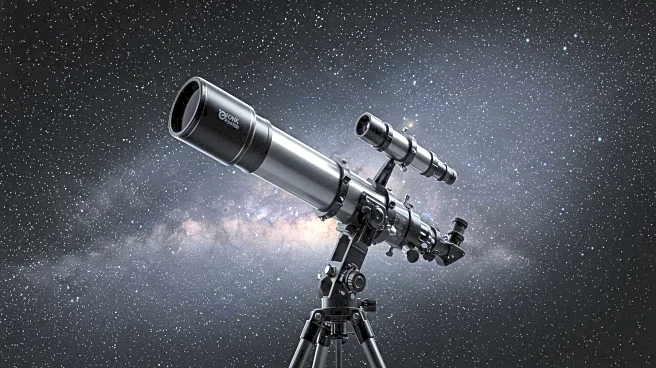Rapid Read • 7 min read
Astrophysicists have identified a black hole in the galaxy SDSS J1148+1930, located approximately 5 billion light-years away, which may be the most massive ever discovered. This black hole is estimated to be 36.3 billion times the mass of the Sun, placing it near the theoretical upper limit for black hole mass. The discovery was made using a gravitational lensing technique, which allowed researchers to measure the black hole's mass with greater certainty than previous methods. The black hole is part of a fossil galaxy, suggesting it formed from the merger of multiple galaxies and their central black holes.
AD
The discovery of such a massive black hole provides significant insights into the formation and growth of supermassive black holes. Understanding these processes is crucial for astrophysics, as black holes play a central role in the dynamics of galaxies. The findings could help refine models of galaxy evolution and the limits of black hole growth. Additionally, the use of gravitational lensing to measure black hole mass with high precision could lead to more accurate assessments of other distant cosmic phenomena.
Further research is expected to explore the implications of this discovery on the understanding of galaxy formation and black hole growth. Scientists may use similar techniques to identify and measure other massive black holes, potentially revising existing theories about the upper limits of black hole mass. The study of fossil galaxies like SDSS J1148+1930 could also provide more clues about the end states of galaxy formation.
The discovery raises questions about the potential existence of even larger black holes and the mechanisms that allow them to reach such sizes. It also highlights the importance of advanced observational techniques in uncovering hidden aspects of the universe. The role of gravitational lensing in astrophysical research may expand, offering new ways to study distant cosmic structures.
AD
More Stories You Might Enjoy










